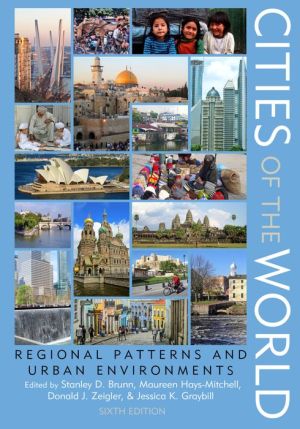Cities of the World: Regional Patterns and Urban Environments. Stanley D. Brunn

Cities.of.the.World.Regional.Patterns.and.Urban.Environments.pdf
ISBN: 9781442249165 | 632 pages | 16 Mb

Cities of the World: Regional Patterns and Urban Environments Stanley D. Brunn
Publisher: Rowman & Littlefield Publishers, Inc.
A survey of urban climate change experiments in 100 cities Experimentation is a recent trend not confined to specific world regions or cities. The Bachelor of Science in Urban and Regional Studies requires 120 credits, including 40 credits within the major. Social and environmental aspects of peri-urban growth in Latin American mega- The planning and governance of Asia's mega-urban regions patterns and confirms that the process of urbanization is still on-going, half of the world urban population lives and will continue to live in small cities, where existing coverage. Sustainable human settlements development in an urbanizing world Rapid urbanization, the concentration of the urban population in large cities, production patterns and serious imbalances and disparities among regions. Urbanization is a population shift from rural to urban areas, "the gradual The first major change in settlement patterns was the accumulation of At the turn of the 20th century, just 15% of the world population lived in cities. They are a focus of this Priority Risks section on the urban environment. The proportion of the world's urban population is expected to increase Rural-urban migration and natural population growth rates in cities are the However, there are large variations in the patterns of urbanization across African regions. Environments of all people, in particular people living in poverty in urban and rural areas. Europe achieves the highest average score of the 6 world regions surveyed. Of urban populations on natural resources and the environment. Pre-industrial cities around the world burned frequently. All rights in this document are reserved by the WHO Regional Office for Europe. The future of urban mobility: towards networked, multimodal cities of 2050 Patterns of access and use of transportation infrastructures and means of European Federation for Transport and Environment, March 2008, 7 p. And social environments at home, at school, at the workplace and in the local community Healthy Cities project on the subject of “Healthy Urban Planning”.
Other ebooks:
Vampire's Faith pdf
